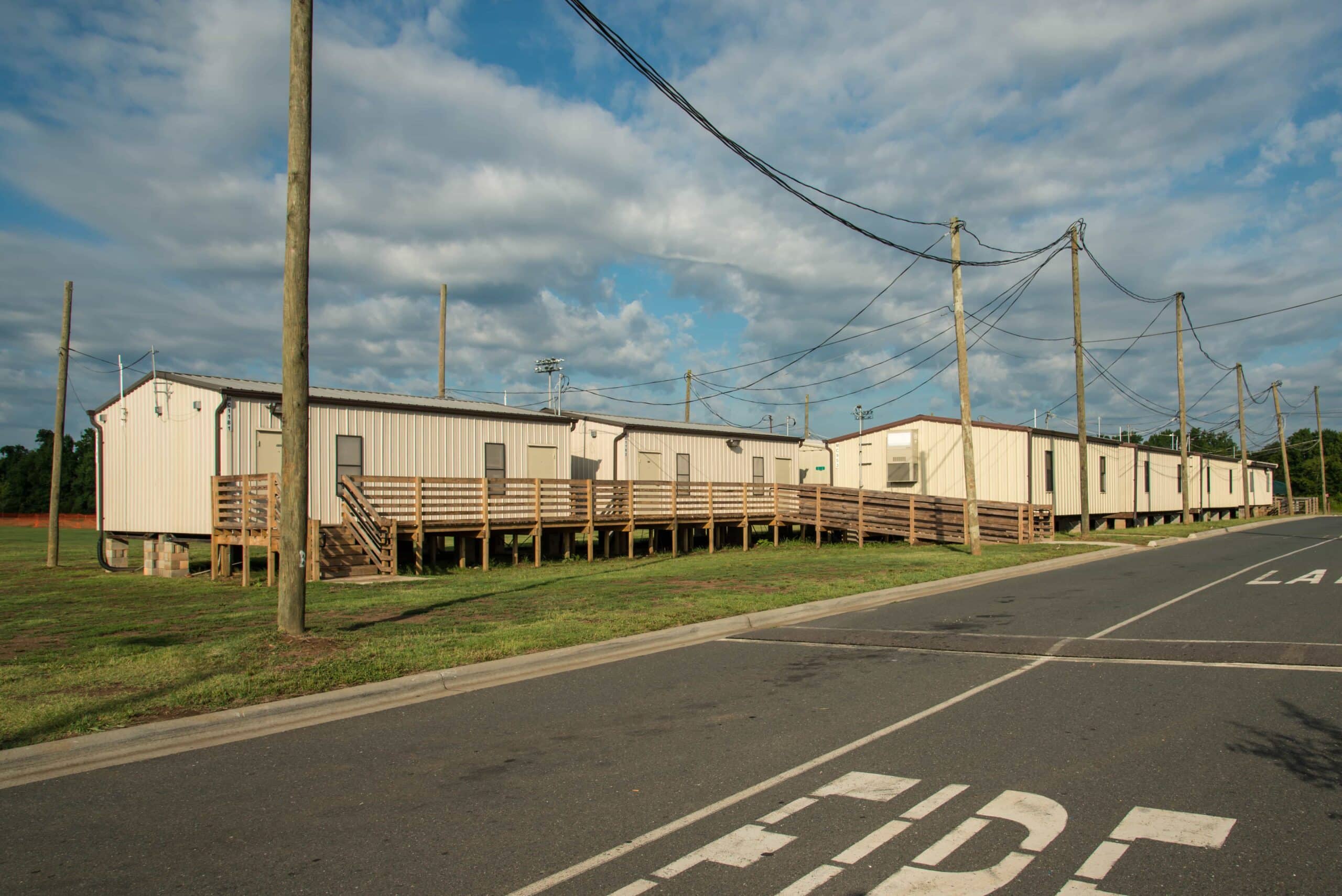Portable classrooms are a great way to house students when your school isn’t usable for repair or renovation reasons or you don’t have enough room for your growing student population. Due to the temporary nature of portable classrooms, you will have to move them at some point. We’ve compiled a list of five tips that will help you organize and prepare for a safe and successful move.
Safety First
The absolute most important focus in moving a portable classroom is safety. Because of the proximity to students and educators, you’ll have to be very sure that the building and area will be clear of activity. Even if the move will be during the summer or on a holiday break, it’s still imperative that you ensure all school faculty and staff are notified of the move date and that administration appoints someone to do a final safety check before the move commences.
Modular building sections are heavy and can be unstable during disassembly, transportation, and reassembly. For these reasons, it is crucial that all non-essential personnel stay away from the site and the building. If the classroom must be moved during the school year, make sure children have absolutely no access to the site. Ensure that the building is completely blocked off from the recess or recreation areas. An even better option would be to have recess relocated during the process so that there is no chance of an accident.
Don’t Forget the Weather
Moving your portable classroom will require the building to be disassembled, which means the interior will be exposed to the outside for a few hours before it’s sealed off for transport. If your building gets wet, you’re looking at hundreds—if not thousands—of dollars’ worth of damage.
To prevent this kind of emergency, we recommend diligently checking the weather forecast in the two weeks leading up to the move. Do your best to schedule during a dry period so that you don’t have to coordinate a reschedule and so that you don’t risk your building getting damaged by wind or rain.
Leave Room for Walkway Access
In most cases, when a school has one portable classroom, they have many. This is very important to consider when you are moving your classroom to its new location. You’ll want to make sure that when the building is installed, you leave plenty of room for other buildings to be installed on that property and with all of the access they need to be functional.
In addition to requiring room to simply fit near the other buildings, your portable classroom relocation should factor in the space necessary for walkways. Many modular classrooms are connected by wooden boardwalks due to the temporary nature of these buildings. Be sure that your building’s new resting place leaves room for walkways to be built and accessed by students and educators.
Make Sure You Have Your Permit
Even though your building is temporary, your modular classroom will require a permit. You will want to check with your local permitting office to ensure you have everything in order and are relocating your building legally even if you have a permit for the original location of the building.
Your permit office will want to know your foundation type, ground leveling, where it will sit on the new property, your ADA compliance, utility connections, and they will want to make sure you have a properly functioning sprinkler and/or fire alarm system. Have all of this paperwork on hand when you communicate with the permit office to make acquiring your permit as easy as possible.
Prepare for Final Installation
There is much more to relocating your portable classroom than simply picking it up and moving it to a new location. All of your prep work needs to be completed before your building is disassembled and transported for two reasons: you don’t have hidden costs after moving has begun, and you don’t have to wait to have final details of your site hammered out while your building is sitting on your property disassembled and unusable.
The final site needs to be prepared for your classroom to be installed. You will need to make sure that a proper foundation is set so your building will be supported safely and won’t settle unevenly. If you need to install electricity, water, gas, or sewer systems, you should have that completed before your building is transported. Having all of these factors taken care before the day of the move will save you stress, time, and money, and you will be able to use your building the day it’s relocated.
Final Thoughts
Portable classrooms are fantastic temporary solutions for your school. Whether you’re outgrowing your current building, or your school is undergoing repairs or renovations, modular classrooms are a great way to keep students at their school at a low price for the school system. By taking advantage of the five tips we’ve outlined above, you’re well on your way to executing a safe, stress-free, and efficient portable-classroom relocation.

